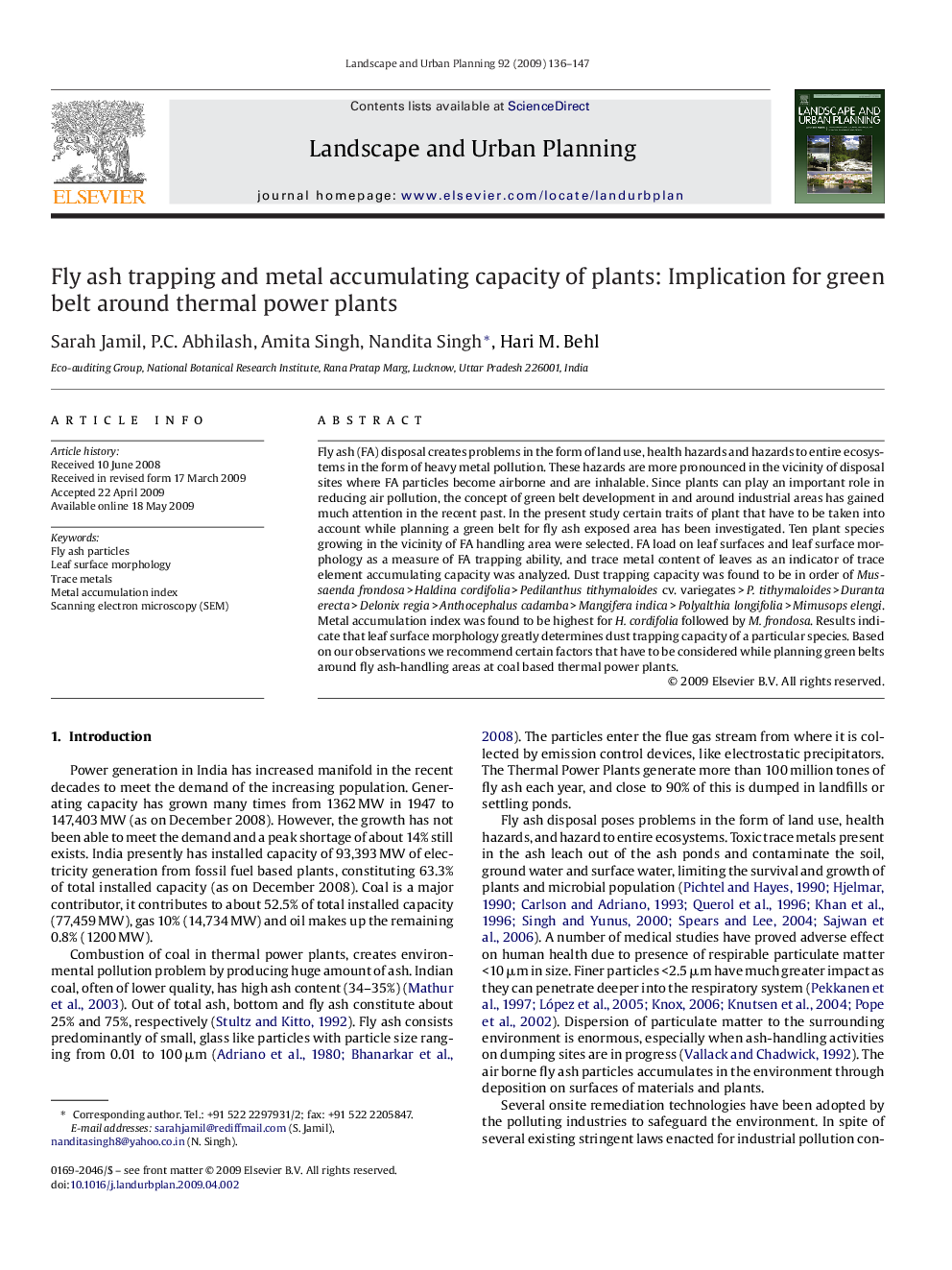| Article ID | Journal | Published Year | Pages | File Type |
|---|---|---|---|---|
| 1050277 | Landscape and Urban Planning | 2009 | 12 Pages |
Fly ash (FA) disposal creates problems in the form of land use, health hazards and hazards to entire ecosystems in the form of heavy metal pollution. These hazards are more pronounced in the vicinity of disposal sites where FA particles become airborne and are inhalable. Since plants can play an important role in reducing air pollution, the concept of green belt development in and around industrial areas has gained much attention in the recent past. In the present study certain traits of plant that have to be taken into account while planning a green belt for fly ash exposed area has been investigated. Ten plant species growing in the vicinity of FA handling area were selected. FA load on leaf surfaces and leaf surface morphology as a measure of FA trapping ability, and trace metal content of leaves as an indicator of trace element accumulating capacity was analyzed. Dust trapping capacity was found to be in order of Mussaenda frondosa > Haldina cordifolia > Pedilanthus tithymaloides cv. variegates > P. tithymaloides > Duranta erecta > Delonix regia > Anthocephalus cadamba > Mangifera indica > Polyalthia longifolia > Mimusops elengi. Metal accumulation index was found to be highest for H. cordifolia followed by M. frondosa. Results indicate that leaf surface morphology greatly determines dust trapping capacity of a particular species. Based on our observations we recommend certain factors that have to be considered while planning green belts around fly ash-handling areas at coal based thermal power plants.
